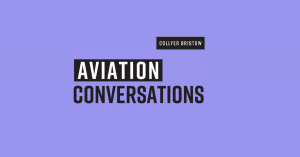- Banking & financial disputes
- Financial services

Longer Reads
How is the Aviation industry managing with COVID-19?
Markets around the world are in treacherous and uncharted waters and the aviation sector looks to be in just about as bad a shape as any. However, the industry has weathered its fair share of crises and will have gained valuable experience from other difficult times. Simon de Broise looks at how it is responding.
4 minute read
Published 24 April 2020
Key information
- Services
- Banking & financial disputes
- Sectors
- Financial services
Markets around the world are in treacherous and uncharted waters (US oil benchmark goes negative?!) and the aviation sector looks to be in just about as bad a shape as any. The word ‘unprecedented’ may be in danger of becoming a cliché, but it is difficult to come up with a more appropriate adjective. Modern-day economies have never had to manage this level of disruption and, given the scale and far reaching consequences of the pandemic, it is not something that could realistically have been planned for.
The figures in the airline sector make for unpleasant reading; capacity in the European market has dropped by around 94%, IATA estimates that the impact on passenger revenues for the industry will be over US$300bn and there is no end to the troubles in sight – which makes planning for the recovery all the more difficult.
Still, the aviation industry has weathered more than its fair share of crises and, whilst none have been on this (unprecedented) scale, it will have gained valuable experience from other difficult times that may prove useful in the months (and possibly years) ahead. So, how is the market reacting?
Airlines
The response from airlines has been to preserve cash by any means necessary. Fleets have been grounded, staff have been furloughed and new aircraft orders deferred or cancelled. This will not be sufficient for many airlines, who will require bailouts from their governments to survive.
Larger carriers have approached the enforced shut down in different ways; some are expecting a long wait for a recovery and have sealed up and put aircraft in US desert aircraft parks (which are already temporary homes to B373 MAXs – which were awaiting clearance to fly again), others, who are optimistic that capacity will return more quickly, are keeping aircraft ticking over on ‘ghost’ flights and taking the opportunity to undertake maintenance jobs in the absence of paying customers. Many are no doubt using a combination of strategies, including using the underbellies of passenger aircraft for cargo flights – a sector that remains very busy transporting medical and other supplies around the world.
Notwithstanding quick and innovative action on the part of many airlines, without flying revenues most are unfortunately on borrowed time – some will just have longer than others (sadly, for Virgin Australia time is already up). As with all things COVID-19-related, it is impossible to predict how quickly people will return to flying, but many expect that the recovery will come too late for the UK summer season – which will almost certainly mean that Government intervention will become necessary for most UK carriers at some point.
The position of the UK Government is that airlines must exhaust commercial financing options (including raising capital from shareholders) before seeking state aid, but the time for this may be fast approaching.
How the Government goes about providing any aid is not straightforward. Firstly, there are the practicalities of providing the necessary cash – will this be by way of debt (most will be unable to service regular interest payments), equity, or perhaps some form of bond? Second, and more challengingly, how will the Government allot its payments and what conditions will be attached? Is it right that taxpayers’ money will be used to save airlines if they didn’t have sustainable business models in place before the crisis? Will the Government require airlines to take more proactive steps to reduce carbon emissions and work harder on finding alternative fuel sources? All this remains to be seen.
Lessors
The leasing market is in similarly dire straits. Lessees can no longer fly their planes (or are barely doing so) in order to fund their lease payments, and as a result are falling into default. Aircraft leases are notoriously lacking in get-out clauses (as you would expect given the value of the underlying asset); lessees are usually unable to rely on force majeure provisions, which are almost never included, and, similarly, the common law remedy of frustration is rarely helpful, given that it operates to terminate an agreement when usually a suspension is what is really required. As a result, lessors are being inundated by requests for rent holidays and deferments from their lessees (some for up to a year) and are having to reluctantly consent in many cases, notwithstanding the ‘hell or high water’ provisions in most aircraft leases requiring lessees to pay the rent come what may. Although lessors might be entitled to repossess aircraft, this is not currently an attractive option in most cases given some of the practical difficulties in recovering aircraft with the current restrictions in place and given the prevailing re-marketing conditions. Accordingly, many lessors are permitting short rent holidays whilst keeping a weather eye on market conditions and the financial health of their lessees. There will come a time of course, when lessors will have to act to protect their assets.
Many lessors will also need to have their own discussions with financiers in order to try to agree back-to-back payment holidays – and likely debt restructures in due course.
There will be others in market with cash to spend, who will be able to pick up aircraft cheaply – perhaps some of the private equity houses who have been courting the sector for the last few years.
Manufacturers and suppliers
As mentioned at the start, airlines (and lessors) are seeking to cancel or defer orders for new aircraft that they cannot currently fly and as a result backlogs are forming. There are also practical difficulties for purchasers who still wish to take delivery of new aircraft – although deliveries are still taking place thanks to some ‘thinking-outside-the-box’ solutions.
Depending on how long the crisis continues, we may find that the retirement of some wide-bodied aircraft is brought forward and that the general switch to the more versatile narrow-bodied models is accelerated.
State aid may also be needed here. Governments may step in to purchase backed-up inventory in order to keep manufactures solvent. Again, this is an area fraught with difficulties.
Too early to talk about recovery?
There are signs of a cautious recovery in the Chinese market, with capacity back to around 40% of the levels seen at the end of 2019, and some flights are now operating out of the Middle East. For the European market however, recovery looks a long way off. Even when widespread restrictions are lifted, it is far from clear how long it will take for passenger numbers to recover. Travellers visiting close friends and family are likely to be the first to return, but the economic impact of the pandemic is sure to temper the return of business travellers and holidaymakers alike. Carriers are currently exploring the possibility of blocking seats to facilitate social distancing, and provide greater reassurance to flyers, but not everyone is convinced that this is the right move (or indeed that it will be effective). It is likely that the only certain way to get things back to ‘normal’ is for medical science to develop and widely distribute an effective vaccine, but this seems some way off.
Until restrictions are lifted, the industry can do little but preserve cash and plan for the day when we can return to travelling again, keeping in mind that the new ‘normal’ may not be a return to travelling as we know it. Many countries are now past the peak of the first wave of infections and so will be working around the clock to re-open their economies for business – this cannot come soon enough for the aviation sector.
Longer Reads
How is the Aviation industry managing with COVID-19?
Markets around the world are in treacherous and uncharted waters and the aviation sector looks to be in just about as bad a shape as any. However, the industry has weathered its fair share of crises and will have gained valuable experience from other difficult times. Simon de Broise looks at how it is responding.
Published 24 April 2020
Associated sectors / services
Markets around the world are in treacherous and uncharted waters (US oil benchmark goes negative?!) and the aviation sector looks to be in just about as bad a shape as any. The word ‘unprecedented’ may be in danger of becoming a cliché, but it is difficult to come up with a more appropriate adjective. Modern-day economies have never had to manage this level of disruption and, given the scale and far reaching consequences of the pandemic, it is not something that could realistically have been planned for.
The figures in the airline sector make for unpleasant reading; capacity in the European market has dropped by around 94%, IATA estimates that the impact on passenger revenues for the industry will be over US$300bn and there is no end to the troubles in sight – which makes planning for the recovery all the more difficult.
Still, the aviation industry has weathered more than its fair share of crises and, whilst none have been on this (unprecedented) scale, it will have gained valuable experience from other difficult times that may prove useful in the months (and possibly years) ahead. So, how is the market reacting?
Airlines
The response from airlines has been to preserve cash by any means necessary. Fleets have been grounded, staff have been furloughed and new aircraft orders deferred or cancelled. This will not be sufficient for many airlines, who will require bailouts from their governments to survive.
Larger carriers have approached the enforced shut down in different ways; some are expecting a long wait for a recovery and have sealed up and put aircraft in US desert aircraft parks (which are already temporary homes to B373 MAXs – which were awaiting clearance to fly again), others, who are optimistic that capacity will return more quickly, are keeping aircraft ticking over on ‘ghost’ flights and taking the opportunity to undertake maintenance jobs in the absence of paying customers. Many are no doubt using a combination of strategies, including using the underbellies of passenger aircraft for cargo flights – a sector that remains very busy transporting medical and other supplies around the world.
Notwithstanding quick and innovative action on the part of many airlines, without flying revenues most are unfortunately on borrowed time – some will just have longer than others (sadly, for Virgin Australia time is already up). As with all things COVID-19-related, it is impossible to predict how quickly people will return to flying, but many expect that the recovery will come too late for the UK summer season – which will almost certainly mean that Government intervention will become necessary for most UK carriers at some point.
The position of the UK Government is that airlines must exhaust commercial financing options (including raising capital from shareholders) before seeking state aid, but the time for this may be fast approaching.
How the Government goes about providing any aid is not straightforward. Firstly, there are the practicalities of providing the necessary cash – will this be by way of debt (most will be unable to service regular interest payments), equity, or perhaps some form of bond? Second, and more challengingly, how will the Government allot its payments and what conditions will be attached? Is it right that taxpayers’ money will be used to save airlines if they didn’t have sustainable business models in place before the crisis? Will the Government require airlines to take more proactive steps to reduce carbon emissions and work harder on finding alternative fuel sources? All this remains to be seen.
Lessors
The leasing market is in similarly dire straits. Lessees can no longer fly their planes (or are barely doing so) in order to fund their lease payments, and as a result are falling into default. Aircraft leases are notoriously lacking in get-out clauses (as you would expect given the value of the underlying asset); lessees are usually unable to rely on force majeure provisions, which are almost never included, and, similarly, the common law remedy of frustration is rarely helpful, given that it operates to terminate an agreement when usually a suspension is what is really required. As a result, lessors are being inundated by requests for rent holidays and deferments from their lessees (some for up to a year) and are having to reluctantly consent in many cases, notwithstanding the ‘hell or high water’ provisions in most aircraft leases requiring lessees to pay the rent come what may. Although lessors might be entitled to repossess aircraft, this is not currently an attractive option in most cases given some of the practical difficulties in recovering aircraft with the current restrictions in place and given the prevailing re-marketing conditions. Accordingly, many lessors are permitting short rent holidays whilst keeping a weather eye on market conditions and the financial health of their lessees. There will come a time of course, when lessors will have to act to protect their assets.
Many lessors will also need to have their own discussions with financiers in order to try to agree back-to-back payment holidays – and likely debt restructures in due course.
There will be others in market with cash to spend, who will be able to pick up aircraft cheaply – perhaps some of the private equity houses who have been courting the sector for the last few years.
Manufacturers and suppliers
As mentioned at the start, airlines (and lessors) are seeking to cancel or defer orders for new aircraft that they cannot currently fly and as a result backlogs are forming. There are also practical difficulties for purchasers who still wish to take delivery of new aircraft – although deliveries are still taking place thanks to some ‘thinking-outside-the-box’ solutions.
Depending on how long the crisis continues, we may find that the retirement of some wide-bodied aircraft is brought forward and that the general switch to the more versatile narrow-bodied models is accelerated.
State aid may also be needed here. Governments may step in to purchase backed-up inventory in order to keep manufactures solvent. Again, this is an area fraught with difficulties.
Too early to talk about recovery?
There are signs of a cautious recovery in the Chinese market, with capacity back to around 40% of the levels seen at the end of 2019, and some flights are now operating out of the Middle East. For the European market however, recovery looks a long way off. Even when widespread restrictions are lifted, it is far from clear how long it will take for passenger numbers to recover. Travellers visiting close friends and family are likely to be the first to return, but the economic impact of the pandemic is sure to temper the return of business travellers and holidaymakers alike. Carriers are currently exploring the possibility of blocking seats to facilitate social distancing, and provide greater reassurance to flyers, but not everyone is convinced that this is the right move (or indeed that it will be effective). It is likely that the only certain way to get things back to ‘normal’ is for medical science to develop and widely distribute an effective vaccine, but this seems some way off.
Until restrictions are lifted, the industry can do little but preserve cash and plan for the day when we can return to travelling again, keeping in mind that the new ‘normal’ may not be a return to travelling as we know it. Many countries are now past the peak of the first wave of infections and so will be working around the clock to re-open their economies for business – this cannot come soon enough for the aviation sector.
Associated sectors / services
- Banking & financial disputes
- Financial services
Need some more information? Make an enquiry below.
Enjoy reading our articles? why not subscribe to notifications so you’ll never miss one?
Subscribe to our articlesMessage us on WhatsApp (calling not available)
Please note that Collyer Bristow provides this service during office hours for general information and enquiries only and that no legal or other professional advice will be provided over the WhatsApp platform. Please also note that if you choose to use this platform your personal data is likely to be processed outside the UK and EEA, including in the US. Appropriate legal or other professional opinion should be taken before taking or omitting to take any action in respect of any specific problem. Collyer Bristow LLP accepts no liability for any loss or damage which may arise from reliance on information provided. All information will be deleted immediately upon completion of a conversation.
Close








































































